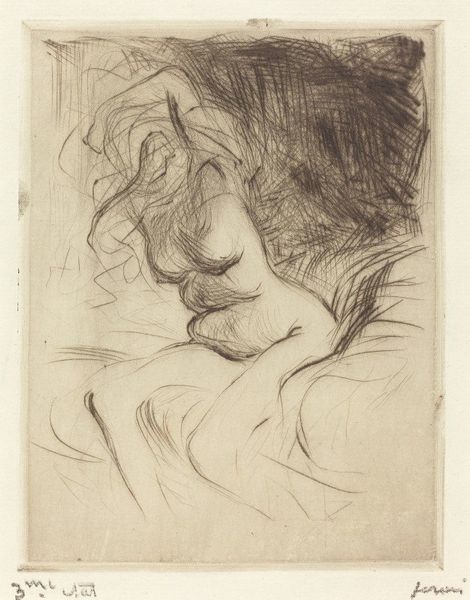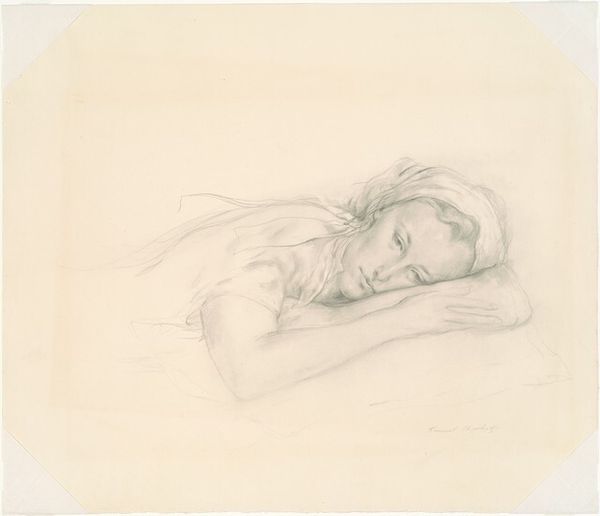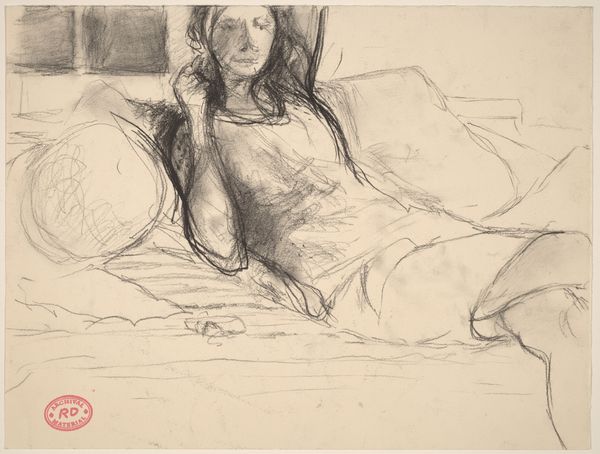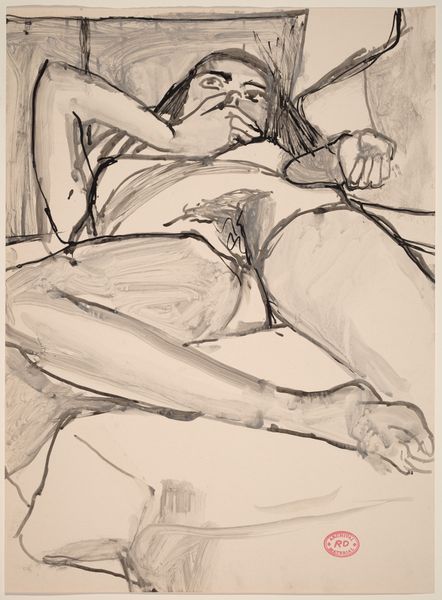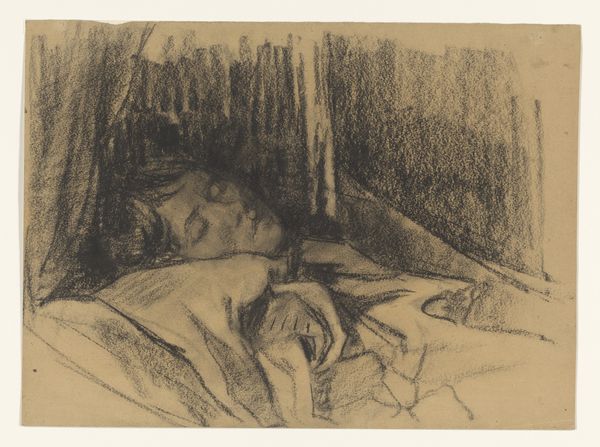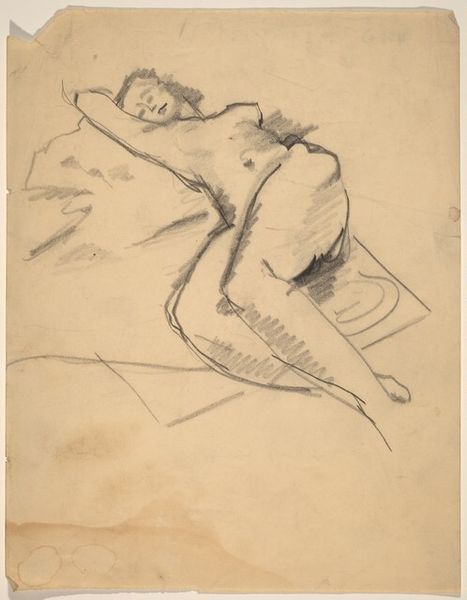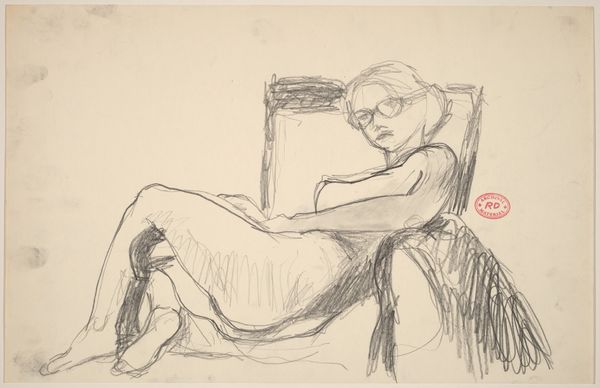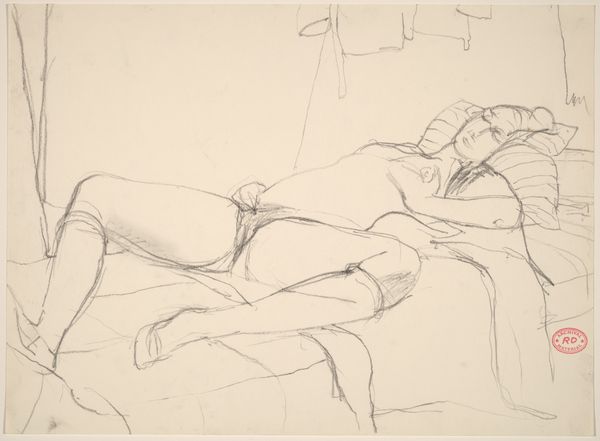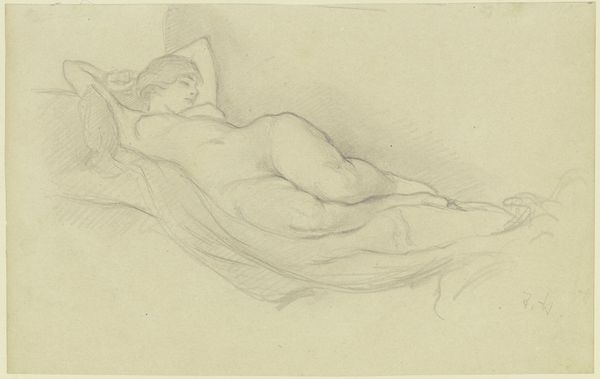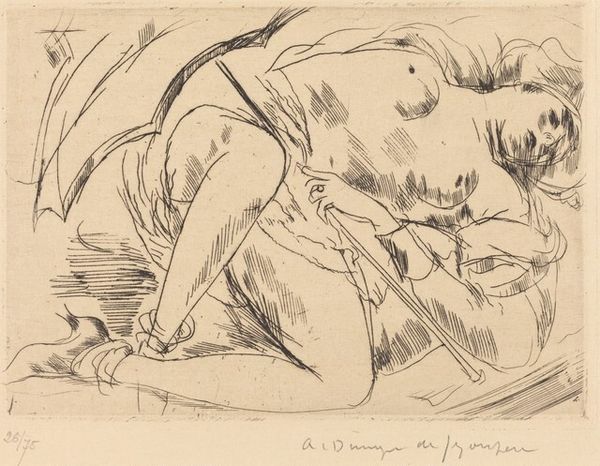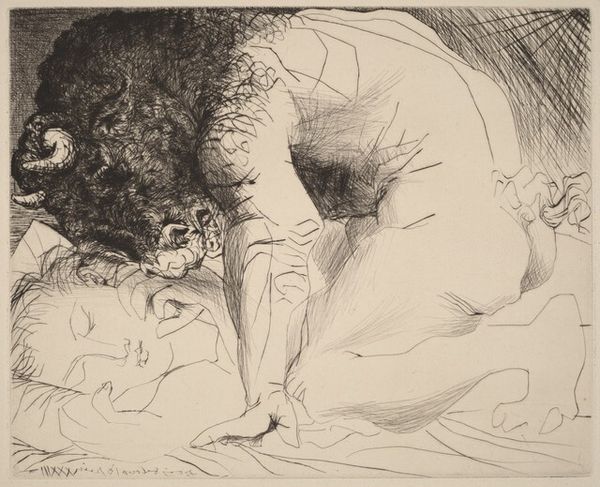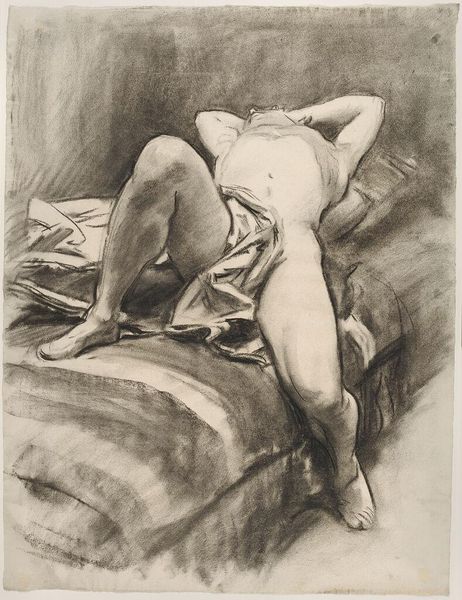
drawing, pencil
#
portrait
#
pencil drawn
#
drawing
#
figuration
#
pencil drawing
#
pencil
#
portrait drawing
#
realism
Dimensions: 10 3/16 x 14 5/16 in. (25.88 x 36.35 cm) (sheet)19 3/4 x 23 3/4 in. (50.17 x 60.33 cm) (outer frame)
Copyright: No Copyright - United States
Curator: Looking at this delicate pencil drawing, "Lili Grenier Sleeping," dating back to around 1904, by Albert Belleroche. It’s currently held here at the Minneapolis Institute of Art. Editor: It’s strikingly intimate, isn’t it? The softness of the pencil strokes really captures a feeling of peace and vulnerability. Curator: Absolutely. Belleroche had close ties to artistic circles in London and Paris. He was deeply influenced by the art and social dynamics of his time. The subject, Lili Grenier, was one of his frequent models. He renders her here with a sense of quiet observation. There's almost a voyeuristic quality in its candor, reflecting the burgeoning Realist movement of the time. Editor: I find it interesting how the informal pose subverts the expected, perhaps even idealized, representation of women. Consider, for a moment, how sleep disrupts performative identity. Sleeping, Lili becomes unreachable, an interruption to expected social scripts of beauty and behavior for women. I see it as a kind of subversive, perhaps unintentional, claim to bodily autonomy. Curator: That’s an astute observation. It’s tempting to apply modern interpretations, though Belleroche might have seen it more as an exploration of form and light on the figure. Still, the drawing opens conversations about how women's images were controlled and presented, and what a seemingly simple act like portraying someone sleeping could mean within those frameworks. Editor: Exactly! How do you see Belleroche fitting into the history of representing the female form, particularly through the lens of the male gaze, a critique so vital within feminist art theory? Curator: It's essential to examine those power dynamics. His closeness to the model—a familiarity apparent in the easy strokes of his pencil— complicates those assumptions. But also, such representations could both objectify and humanize, a paradoxical element to unpack when assessing art's socio-political implications. Editor: A pencil drawing like this can act as a mirror reflecting complex social realities. The intimacy he captured offers insight into not only artistic techniques but broader issues of representation and autonomy. Curator: Ultimately, this drawing is a window into a specific moment, shaped by artistic trends and social considerations, and that allows us to think about both then and now.
Comments
minneapolisinstituteofart almost 2 years ago
⋮
Virtuoso draftsman Albert de Belleroche was born in England to a rich, aristocratic French family, and he was raised in Paris from infancy. His wealth freed him from having to accept commissions. He often shared studios with close friend John Singer Sargent, until the latter settled in London. Though reserved and perhaps aloof, Belleroche, as he preferred to be called, loved the gaiety of Montmartre and kept a studio opposite the Moulin Rouge. Another longtime friend, Henri de Toulouse-Lautrec, made Lili Grenier famous through his series of portraits of her, but later she came to model almost exclusively for Belleroche. The intimacy of the model/artist relationship sings through this tender image of Lili asleep.
Join the conversation
Join millions of artists and users on Artera today and experience the ultimate creative platform.
